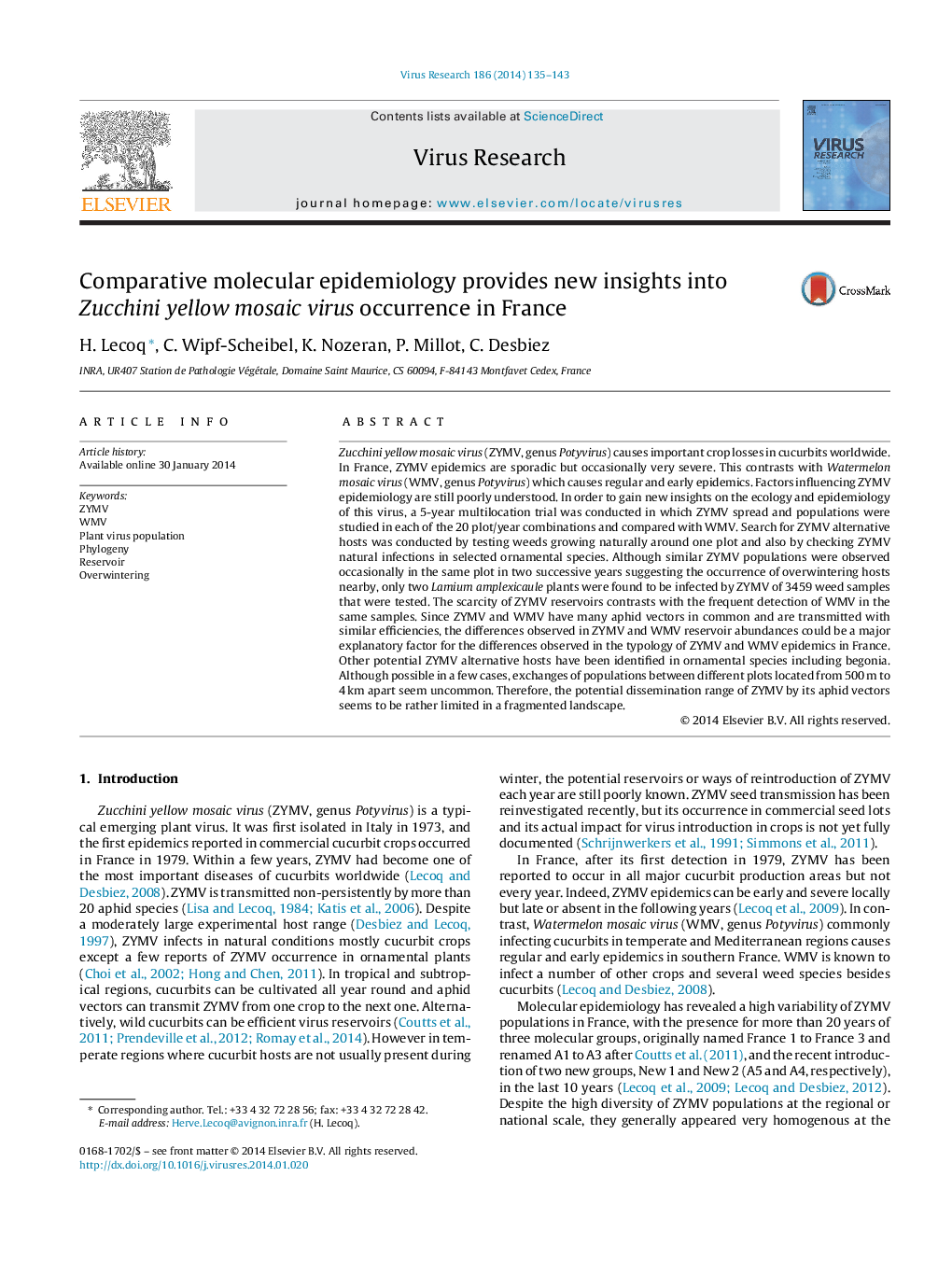| Article ID | Journal | Published Year | Pages | File Type |
|---|---|---|---|---|
| 6142445 | Virus Research | 2014 | 9 Pages |
â¢ZYMV epidemics were irregular and sporadic in plots located 500-4000 m apart.â¢Different ZYMV populations may be observed in neighbouring plots in the same year.â¢Five major (n > 24) and 13 minor (n < 9) ZYMV haplotypes were found during 5 years.â¢ZYMV infections in weeds were rare (0.2%) compared to WMV (4.6%).
Zucchini yellow mosaic virus (ZYMV, genus Potyvirus) causes important crop losses in cucurbits worldwide. In France, ZYMV epidemics are sporadic but occasionally very severe. This contrasts with Watermelon mosaic virus (WMV, genus Potyvirus) which causes regular and early epidemics. Factors influencing ZYMV epidemiology are still poorly understood. In order to gain new insights on the ecology and epidemiology of this virus, a 5-year multilocation trial was conducted in which ZYMV spread and populations were studied in each of the 20 plot/year combinations and compared with WMV. Search for ZYMV alternative hosts was conducted by testing weeds growing naturally around one plot and also by checking ZYMV natural infections in selected ornamental species. Although similar ZYMV populations were observed occasionally in the same plot in two successive years suggesting the occurrence of overwintering hosts nearby, only two Lamium amplexicaule plants were found to be infected by ZYMV of 3459 weed samples that were tested. The scarcity of ZYMV reservoirs contrasts with the frequent detection of WMV in the same samples. Since ZYMV and WMV have many aphid vectors in common and are transmitted with similar efficiencies, the differences observed in ZYMV and WMV reservoir abundances could be a major explanatory factor for the differences observed in the typology of ZYMV and WMV epidemics in France. Other potential ZYMV alternative hosts have been identified in ornamental species including begonia. Although possible in a few cases, exchanges of populations between different plots located from 500Â m to 4Â km apart seem uncommon. Therefore, the potential dissemination range of ZYMV by its aphid vectors seems to be rather limited in a fragmented landscape.
